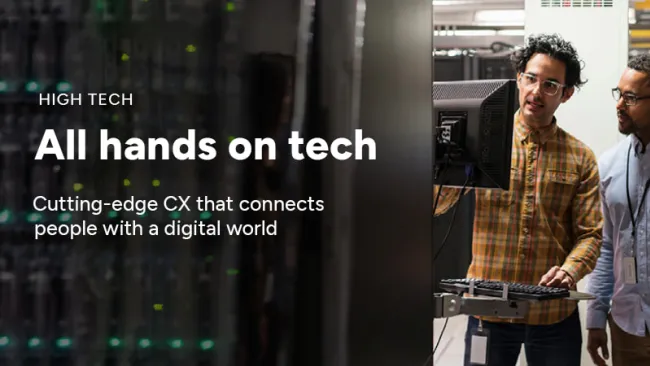At Cisco's first-ever virtual WebexOne Conference, business leaders, humanitarians, and technology expert teamed up to explore a new future born out of uncertainty, one that champions and enables inclusivity in the workplace.
Digital transformation coupled with remote work has given organizations the opportunity to connect employees from all walks of life. Here are 3 key insights we gathered on how technology and humanity can work together to unlock the best our rewritten workplace can offer.
#1: Technology levels the playing field
COVID-19 tore apart the traditional workplace structure. Teams that relied on face-to-face collaboration found themselves separated, employees struggled to juggle work and life, and soon enough people wanted a voice. “Everyone needs a seat at the table, no matter where the table is,” said Jeetu Patel, Cisco’s SVP/GM of security and applications. But how do we get there?
Diving into Cisco’s new features for its Webex digital collaboration tool, Patel helped underline some crucial struggles that are blocking employees from feeling connected and valued:
- Combat background noise: Ambient noise is a major factor for at-home employees who are managing several responsibilities at once. Sound recognition technology needs to remove background noise without effecting the fidelity of human speech.
- Reinvent the schedule: Traditional communication software blocks off large increments of time for meetings that may be less than a half an hour. New templates need to allow users to accurately block off time to the minute and introduce a timer to set the pace of the meeting.
- Give everyone a voice: Introverts and quiet speakers can be bogged down on virtual software that keeps those who are not speaking hidden. The introduction of a roundtable format, where every speaker gets a time limit can help give every employee a say. Another crucial factor in speech is live-translating languages to help break down barriers.
- Recognize feedback: People rely on body language for feedback. In a virtual world, programs can recognize hand gestures and facial expressions to pull up relevant emojis or similar graphics to help show their feelings (remember to be aware of expressions in various cultures when programming.)
Digital transformation is here, but it needs innovation. The collaboration tools used today were enough to sustain the initial wave of at-home work. To build a better tomorrow that enables a hybrid environment to thrive, it needs to change to connect people and make workplaces more inclusive, wherever it is.
#2: Innovation needs to be on its feet
COVID-19’s effect on life and work have reshaped how businesses are planning their future. “There are decades where nothing happens and then there are weeks where decades happen,” said Fletcher Previn, CIO of IBM. He described 2020 as a transition period from handling remote technology and tackling security concerns to now focusing on culture and how to maintain positivity leading to the future.
Part of leading that culture is ensuring that employees aren’t deprived of relationships with their co-workers. Collaboration tools will be essential to connect people to each other as different organizations transition between full-returns, remote, and hybrid workplaces.
This means the platforms need to be deployed intelligently and come as close as possible to replicating in-person interactions. Several speakers highlighted simultaneous channel usage to create seamless conversations for employees to brainstorm, collaborate, and socialize.
#3: Compassion is the future
In a fireside chat between lawyer and human rights advocate Amal Clooney and Cisco’s Chief People Officer Fran Katsoudas, the two explored why compassion is needed more than ever in the world and at work.
Clooney, who has worked on many high-profile human rights cases, discussed the need to work where there will be the most impact. As she described, actions in and outside of the court can have ripple effects, be it negative or positive. Tackling these difficult circumstances can help work toward a greater good.
Shifting to how organizations can make an impact, customers expect the companies they do business with to care, and showing care means action. Clooney followed up with organizations who have championed this mindset by using technology to act a life line for loved ones, stepping in when the government hasn’t acted, and allocating their resources for public services.
Organizations who act on a cause are likely to stand out to customers and foster employees who are proud of who they work for. But this requires work, and recovering from 2020 will require everyone to leave the observer role. “What do you want your story to be?” asked Clooney. “Make sure it’s one you are proud of.”
Enact change
A driving theme was that diversity and inclusivity is not optional, it’s necessary for innovation. Employees from various backgrounds and cultures bring value to an organization, and people who are seen and heard drive great humanitarian and business results.
If you’ll like to learn about Cisco’s innovation and its partnership with TTEC visit https://www.ttec.com/cisco to learn more today.


















